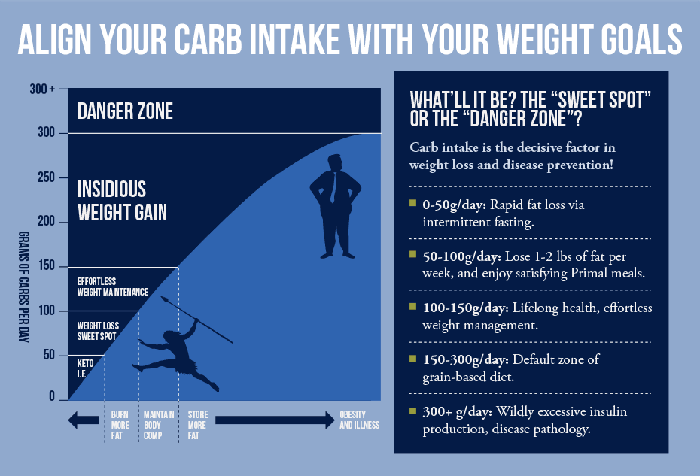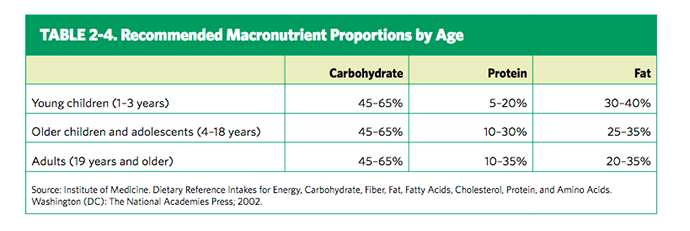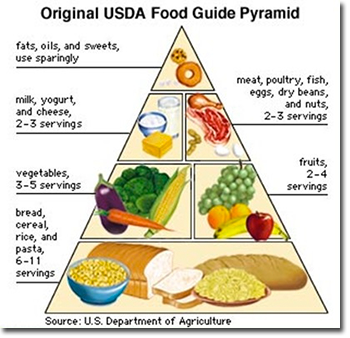Let’s wind up this whirlwind tour of macronutrient partitioning with a look at the role fat plays in your food plan and a key closing thought. Scroll down below (or click) to read Part 1 and Part 2 if you missed them.
Getting to Your Best Macronutrient Partitioning: Fats
Fats, despite growing evidence to the contrary, continue to be broadly demonized by many in the traditional health and nutrition world (see current recommendations from the American Heart Association for example); not only that, we’re constantly implored to utilize the very fats that are in reality shockingly bad for us – namely the highly-oxidized, chemically-modified, PUFA-dominated franken-oils lining most supermarket shelves (again, see the AHA link above).
The good, healthy fats (butter and ghee, coconut oil and coconut products, animal fats, olives and olive oil, and avocados for example) provide a host of benefits and can be enjoyed, within the bounds of common sense, with two primary goals in their consumption: balancing out your daily caloric needs as your primary fuel source (after establishing your carb and protein requirements) and making your food taste good (yep, much of the flavor you savor in your food comes from fat).
[And yes, we’ll being taking a detailed look at what makes ‘good fats’ far better for you in detailed posts down the road. If you’re currently exploring the issue and want to dig deeper (no pun intended), pick up a copy of Dr. Cate Shanahan’s book Deep Nutrition for a dive into the science underlaying the fat recommendations here and across much of the wellness literature today.]
Balancing out daily caloric needs is the key take home point here and points to a critical principle that continues to fly in the face of conventional wisdom – that point being that the human machine (our metabolism) runs optimally on fat as its primary fuel source, not carbohydrates. There’s a plethora of literature espousing this Fat Paradigm (here’s a seminal article from Phinney, 2004), and we’ll be looking at the topic in much more detail a few weeks down the road.
Practically speaking, once you’ve reacquainted your metabolic machinery with the reality of burning fat as a preferred fuel source (which conceptually isn’t that difficult to do), fats become the variable in your food plan allowing you to accomplish all sorts of things. Things like rational, consistent weight loss or fueling high level functional life or athletic activities.
[As an example, I have a client who wants to loose roughly 40 pounds (at a very sustainable rate of 1.5 lb/wk), and we’ve dialed in her comfortable carb intake at about 60 g/day and protein in the neighborhood of 90 g/day. With her calculated BMR (based on LBM and adjusted for activity) 2150 cal/day, it’s a simple calculation to subtract her carb+protein intake derived calories from her BMR, along with the calorie deficit to produce the desired weight loss, to see that she needs about 800 cal/day from good fats, roughly 88 grams. An easy-peasy plan to derive and accomplish.]
For many breaking out of the carb-dependent paradigm can be a challenge, but once you’ve personally experienced the power of changing over to fat as your preferred fuel source, a whole new world of possibility opens up.
Getting to Your Best Macronutrient Partitioning: Seek and You Shall Find
In summary, your best macronutrient partitioning plan isn’t one that comes from the benevolent USDA, the American Heart Association (or just about any other traditional medical “association”), or from the fitness guru (and Instagram celebrity) online who promises a foolproof, customized meal plan for just three easy payments of $39.99.
Your optimal macronutrient partitioning plan…
…is at any point in time unique to you and you alone, though there are useful generalizations available to serve as jumping off points when reshaping your approach to food and nutrition,
…is going to be fluid (flexible), changing as your body composition and metabolic health improves,
…is going to be fluid (flexible), changing as your physical and metabolic demands change over time, perhaps even from day to day,
…is most likely going to built around the concept that the bulk of your daily calories will come from fat (good fats!), less from protein, and minimally from carbohydrates,
…will likely vary seasonally,
…will likely become so intuitive you don’t really even think about it from day to day,
…and will likely benefit from an annual or bi-annual “tune up” or “reset”, as in a period of nutritional ketosis for example.
Your challenge, should you decide to accept it, is to find that optimal macronutrient partitioning plan that fits your life today, and learn the skills to adjust it when life throws you a curve ball, or you just feel the need to push your limits out a little further.
Read. Study. Ask questions. Experiment with your own N=1 clinical trials. Need help along the way? We can help, as can a number of excellent health coaches only an email or call away.



 We experienced, yet didn’t really understand, the simple reality that repetitive, glucose-fueled / glucose-burning workouts trained our bodies to prefer or reach for glucose preferentially 24/7.
We experienced, yet didn’t really understand, the simple reality that repetitive, glucose-fueled / glucose-burning workouts trained our bodies to prefer or reach for glucose preferentially 24/7.




















